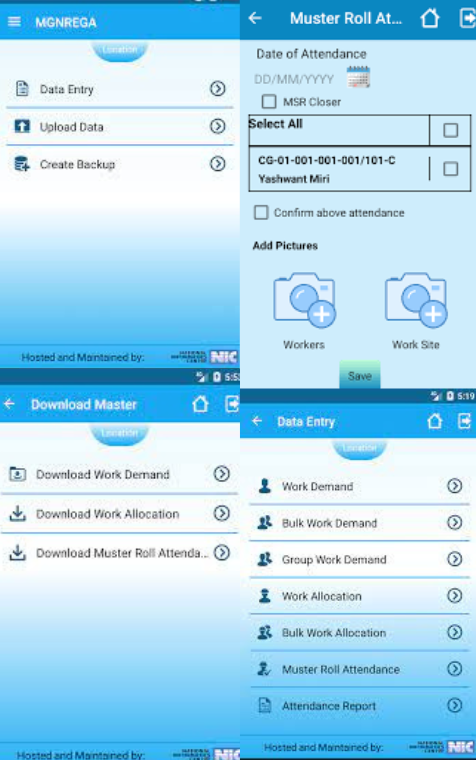27 Feb 2023 Digital attendance system
Digital attendance system
This article covers “Daily current events “and the topic is about the ‘Digital attendance system’ which is in news, it covers “Governance” In GS-2, and the following content has relevance for UPSC.
For Prelims: Digital attendance system
For Mains: GS-2, Governance
Why in news: In almost 40% of gram panchayats, digital attendance is not reported.

Digital attendance system
About the Digital attendance system
- A digital attendance system via a smartphone app is established for the Mahatma Gandhi National Rural Employment Guarantee Plan and made obligatory at workplaces with 20 or more employees.
- Nonetheless, it became mandatory for all work sites on January 1, 2023.
- On May 21, 2021, a pilot version of this activity was started with voluntary application use.
- As per Ministry of Rural Development guidelines, This app requires two time-stamped and geotagged photos of the workers time-stamped, promoting transparency and enhancing citizen supervision.
- The MGNREG Act permits employees to perform task-bound or time-based labor.
- When it comes to posting time- and place-stamped and geotagged pictures of the workers, one should be uploaded about 11 AM and the other after 2 PM.
- For task-based labor, employees were required to stay past 2 PM, even if their tasks were finished, in order to take the required photograph and be paid.
Issues with the Digital attendance system
- The issue with electronic muster rolls, which took the place of paper muster rolls and were in use prior to the introduction of the NMMS, is carried over to the app-based attendance system. No worker can show up and join the team since the muster roll needs to be generated based on demand in this situation.
- The photos with two-time stamps are the second significant issue. The employees frequently complete their tasks but are still required to return to the job site for a second photograph.
- Several activists believe that the incessant requirements placed on MNREGS employees themselves are sufficient to prevent them from relying on the program, defeating its primary goal.
- The main problem is the requirement for smartphones. Because they are in poverty, workers cannot afford modern smartphones.
Additional Information
About MGNREGA
- A significant development in India’s post-independence social security legislative history is the National Rural Employment Guarantee Act (MGNREGA) of 2005.
- It is a government initiative aimed at reducing poverty that gives Indian residents the legal right to work in return for payment.
- It employs, on average, 1.5 crore workers at around 14 lakh places per day.
- By guaranteeing at least 100 days of guaranteed pay employment to any household whose adult members volunteer to perform unskilled manual labor over a fiscal year, it seeks to increase the security of livelihood in rural areas.
- Funding: Both the Center and the States share it.
- The cost of unskilled labor is entirely covered by the central government, as are the costs of semi-skilled and skilled labor, 75% of the cost of materials, and 6% of administrative expenses.
Significance of the MGNREGA
- It is a social security program designed to provide rural impoverished people with jobs and a means of subsistence.
- Large-scale participation of women, Scheduled Castes (SCs) and Scheduled Tribes (STs), and other marginalized sections of society.
- Millions of migrants and other people who were displaced by the pandemic and lost their means of subsistence were able to sustain themselves thanks to the MGNREGA initiative.
- The program made sure that the most vulnerable people had access to basic income, lowering the nation’s suicide rate in the process.
Issues
- Inadequate maintenance
- Lack of funds
- Pendency in unemployment allowances
- Corruption
- Discrimination against women and backward groups
Suggestions
- Social audits
- People need to be made aware of the need to end discrimination.
- For the plan to be implemented properly, the government should allocate sufficient funds. It presently contributes 0.47 percent of GDP, while the World Bank advises 1.7 percent for the program to operate at its best.
- It is important to improve the frequency of National Level Monitors’ (NLMs) monitoring and for States to act appropriately in response to their suggestions.
Source:
Get Current Affairs from Yojna IAS


No Comments